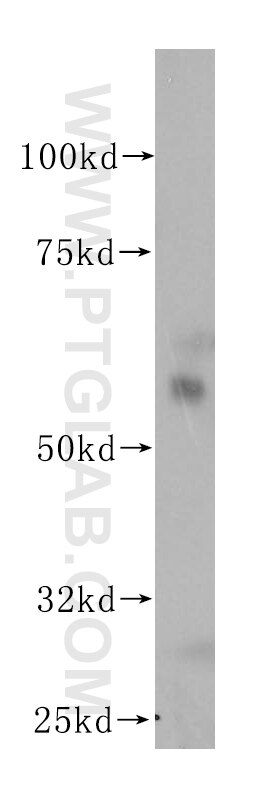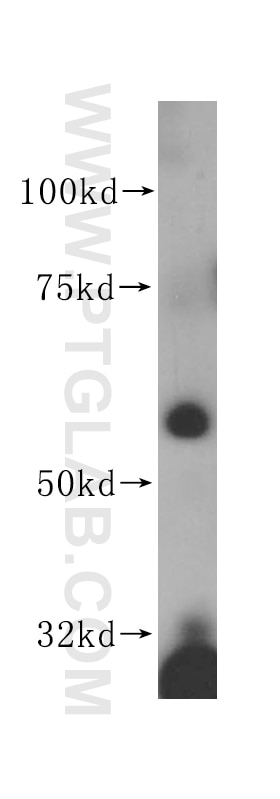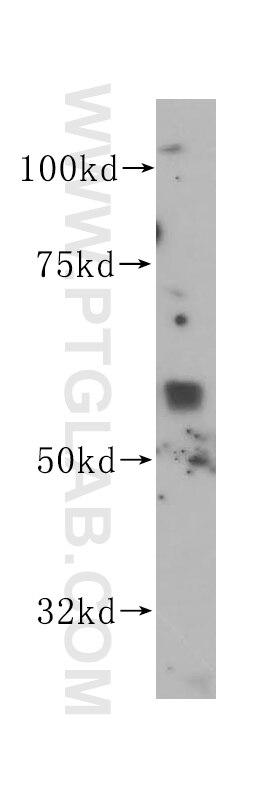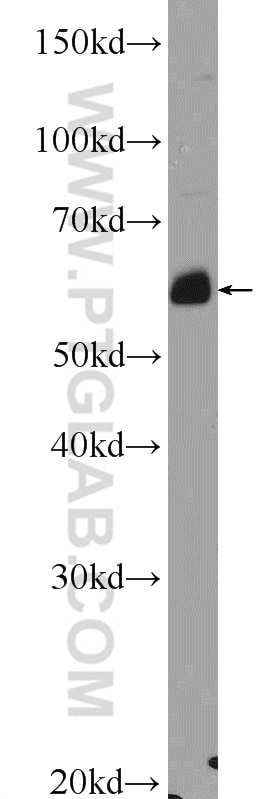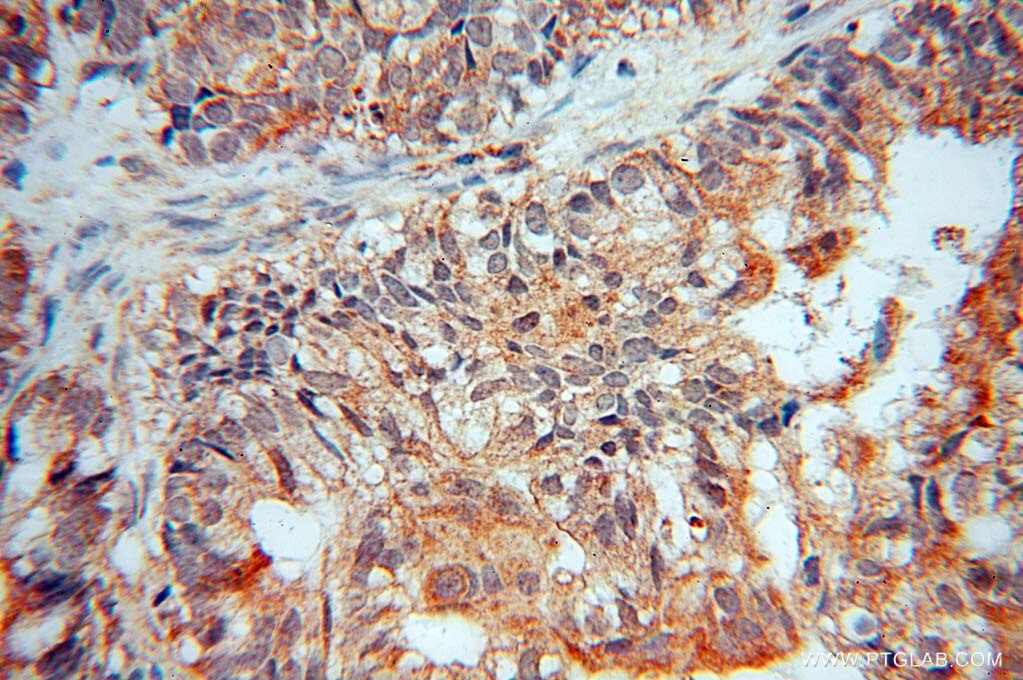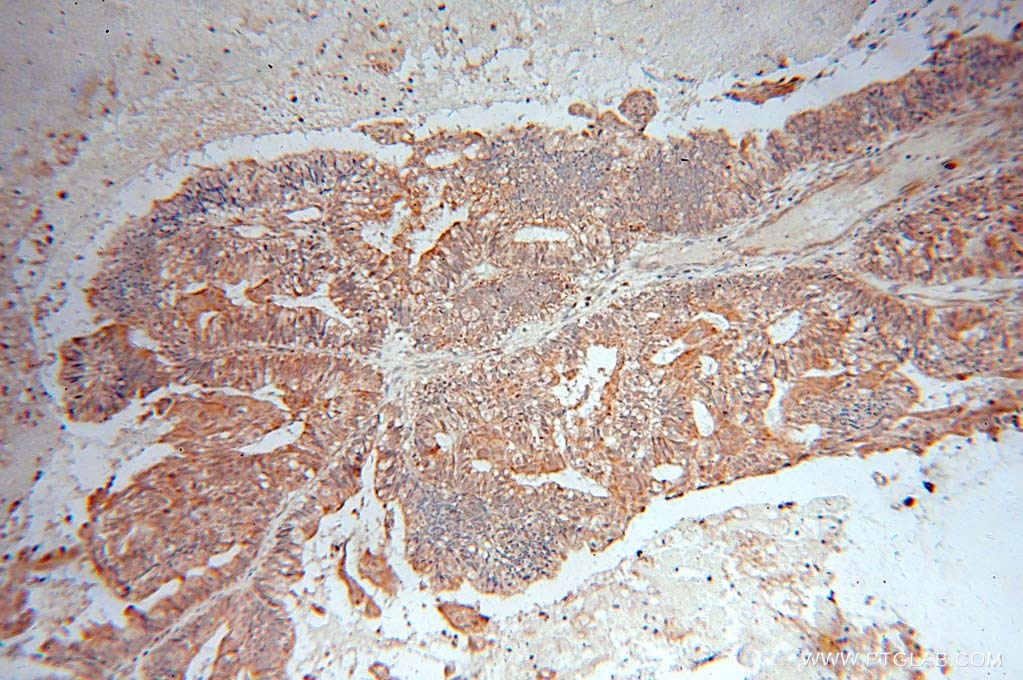Anticorps Polyclonal de lapin anti-ANGPTL1
ANGPTL1 Polyclonal Antibody for ELISA
Hôte / Isotype
Lapin / IgG
Réactivité testée
Humain et plus (1)
Applications
WB, IF, ELISA
Conjugaison
Non conjugué
N° de cat : 14709-1-AP
Synonymes
Galerie de données de validation
Applications publiées
| WB | See 1 publications below |
| IF | See 1 publications below |
Informations sur le produit
14709-1-AP cible ANGPTL1 dans les applications de WB, IF, ELISA et montre une réactivité avec des échantillons Humain
| Réactivité | Humain |
| Réactivité citée | Humain, Hamster |
| Hôte / Isotype | Lapin / IgG |
| Clonalité | Polyclonal |
| Type | Anticorps |
| Immunogène | ANGPTL1 Protéine recombinante Ag6403 |
| Nom complet | angiopoietin-like 1 |
| Masse moléculaire calculée | 55 kDa |
| Poids moléculaire observé | 55 kDa |
| Numéro d’acquisition GenBank | BC050640 |
| Symbole du gène | ANGPTL1 |
| Identification du gène (NCBI) | 9068 |
| Conjugaison | Non conjugué |
| Forme | Liquide |
| Méthode de purification | Purification par affinité contre l'antigène |
| Tampon de stockage | PBS with 0.02% sodium azide and 50% glycerol |
| Conditions de stockage | Stocker à -20°C. Stable pendant un an après l'expédition. L'aliquotage n'est pas nécessaire pour le stockage à -20oC Les 20ul contiennent 0,1% de BSA. |
Informations générales
Angiopoietin-like protein (Angptl) 1, also known as angiopoietin-related protein 1 (ARP1) and angioarrestin, belongs to the angiopoietin-like family of proteins (Angptls). It is a secretory glycoprotein that shares two basic structural motifs with the angiopoietin family: an N-terminal coiled-coil domain and a C-terminal fibrinogen-like domain. Angptl1 is widely expressed in adult tissues with mRNA levels highest in highly vascularized tissues. It is related to development of the connective tissue and cartilage. This protein was found to be a secretory protein that does not act as an endothelial cell mitogen in vitro.
Publications
| Species | Application | Title |
|---|---|---|
Protein Cell Dynamic roles of angiopoietin-like proteins 1, 2, 3, 4, 6 and 7 in the survival and enhancement of ex vivo expansion of bone-marrow hematopoietic stem cells. | ||
Int Endod J FoxO1 mediates odontoblast differentiation of hDPSCs via B cell-derived ANGPTL1 in dental caries: A laboratory investigation |
